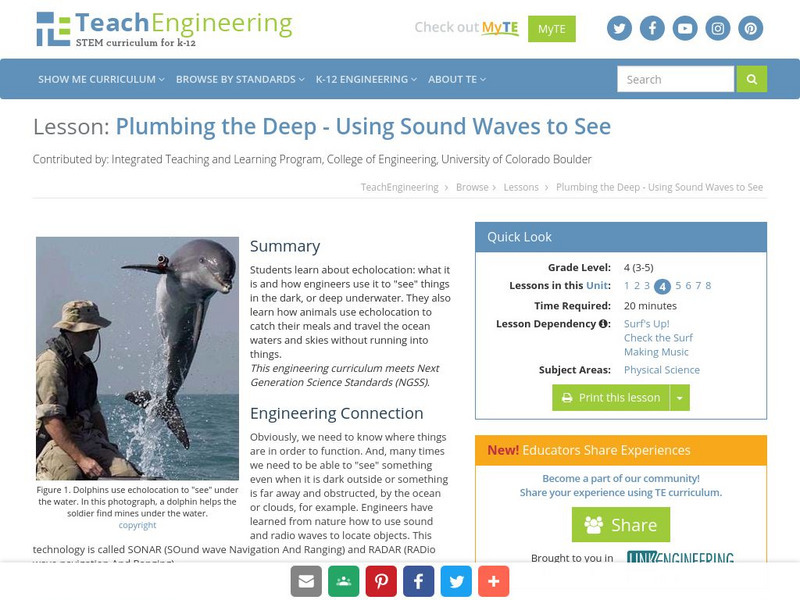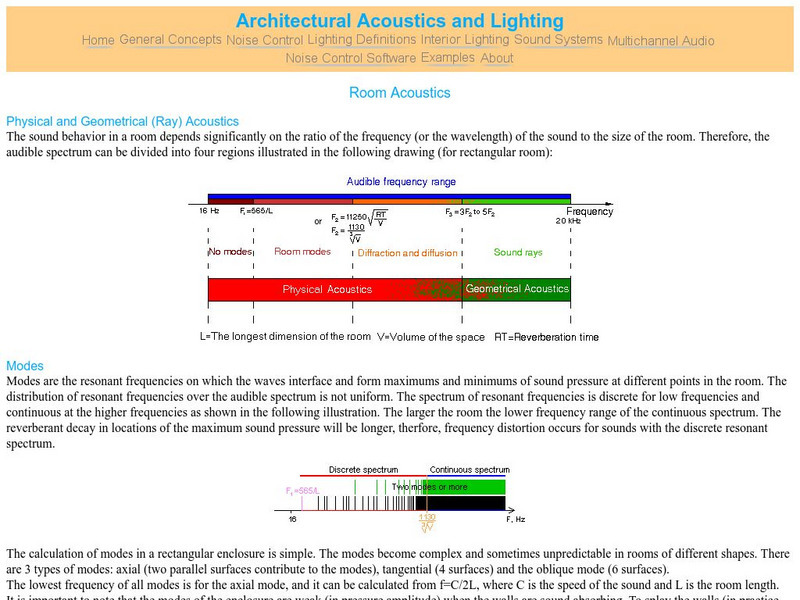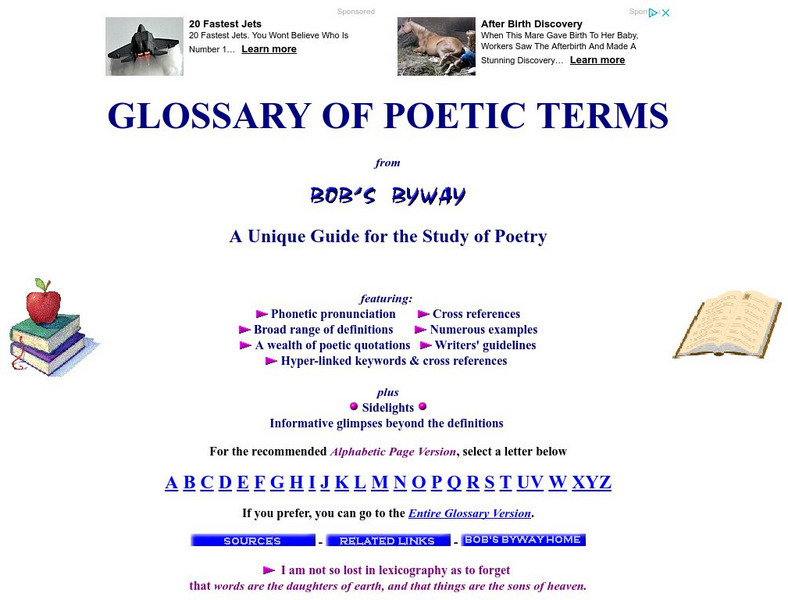TeachEngineering
Teach Engineering: Sound Environment Shapers
For this lesson, learners are introduced to the sound environment as an important aspect of a room or building. Several examples of acoustical engineering design for varied environments are presented to students. Learners learn the...
TeachEngineering
Teach Engineering: Plumbing the Deep: Using Sound Waves to See
In this lesson plan, students learn about echolocation: what it is and how engineers use it to "see" things in the dark, or deep underwater. Also, they learn how animals use echolocation to catch their dinner and travel the ocean waters...
NASA
Nasa: Electromagnetic Spectrum: Radio Waves
Radio waves have the longest wavelengths in the electromagnetic spectrum. This NASA article discusses AM, FM, TV, cell phone, as well as radio astronomy, which all use this technology.
Other
Greek Mythology Today and Myth of the Month
A large Greek mythology site focused on students and expressing a great love of Greek myth. Contains the Myth of the Month, as well as Homework Help concerning myths. Humorous and colorful.
Other
Npc: Dictionary of Noise Control
A large dictionary of words and terms related to noise control and pollution. A good starting place and/or excellent reference site.
BBC
Bbc: Gcse Bitesize: Why Do Scientists Think That Light and Sound Are Waves?
Light travels as transverse waves and can travel through a vacuum. Sound travels as longitudinal waves and needs to travel through a solid, liquid or gas. Read about the properties of light and of sound, and learn the differences between...
NASA
Electromagnetic Spectrum: Ultraviolet Waves
Ultraviolet (UV) light has shorter wavelengths than visible light. Though these waves are invisible to the human eye, some insects can see them. The specific wavelength values are given. Uses and applications of these waves are explained.
ClassFlow
Class Flow: Sound Review
[Free Registration/Login Required] How does sound travel and what parts of the ear detect sound best? Using multiple websites, students discover animals that make the loudest sounds, which tapped glass will create the highest pitch, what...
Other
Architectural Acoustics and Lighting: Room Acoustics
This site from Architectural Acoustics and Lighting provides a discussion of various factors affecting the acoustics of a given room. Room dimensions, the wavelength of the sound wave, the physical characteristics of the walls, the...
Other
Bob's Byway: Glossary of Poetic Terms
Calling itself "unique," Bob's is easy to use, with cross-links throughout, phonetic pronunciation guides when necessary, and many examples and quotations. Click on the letter and scroll for the word.










